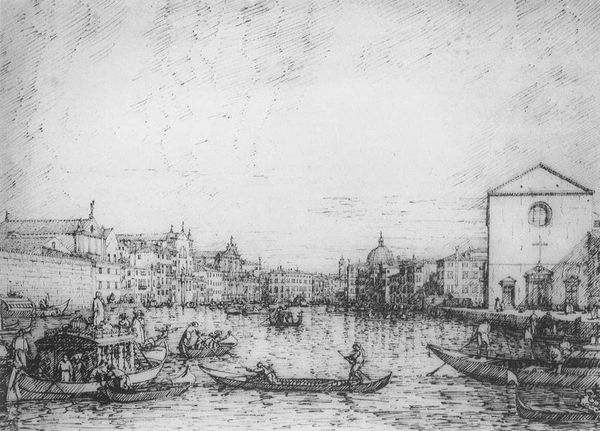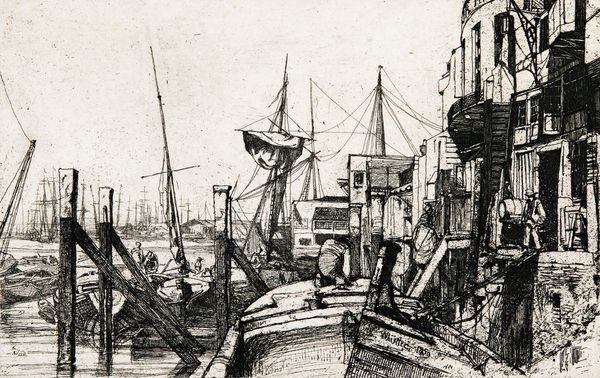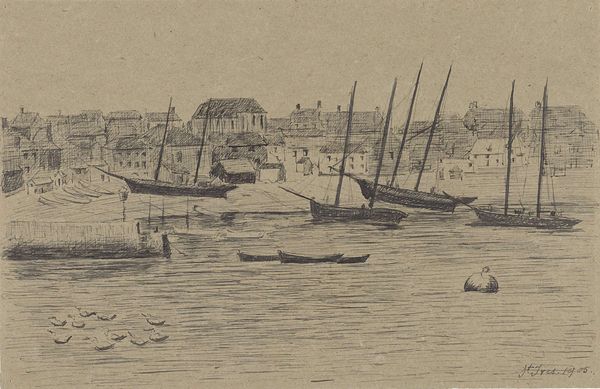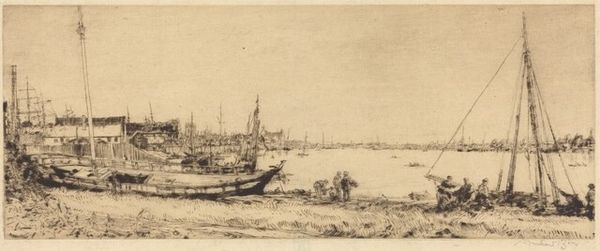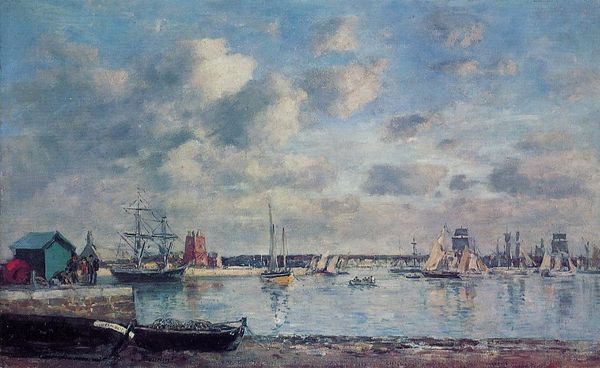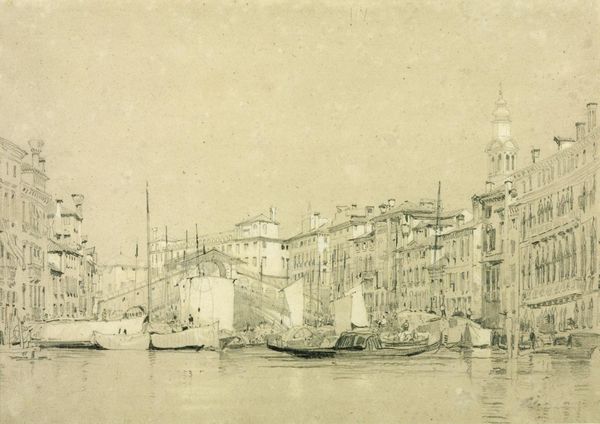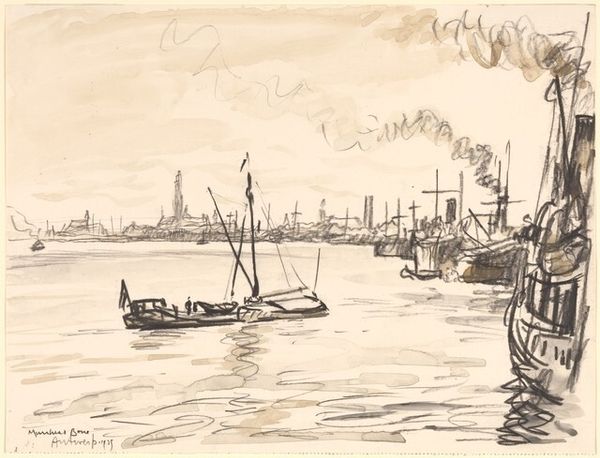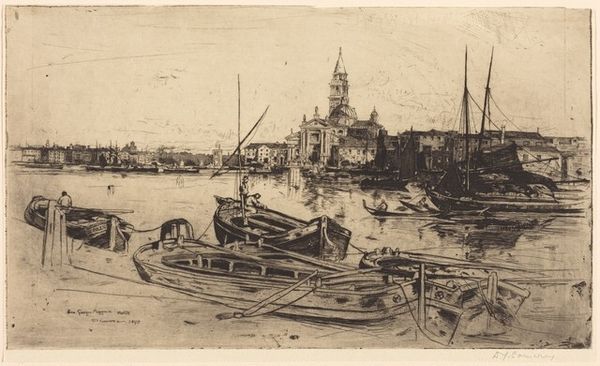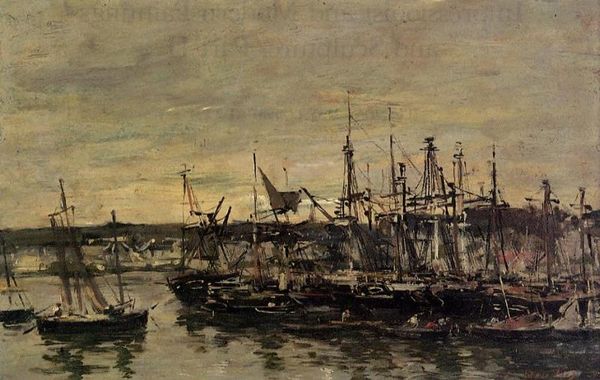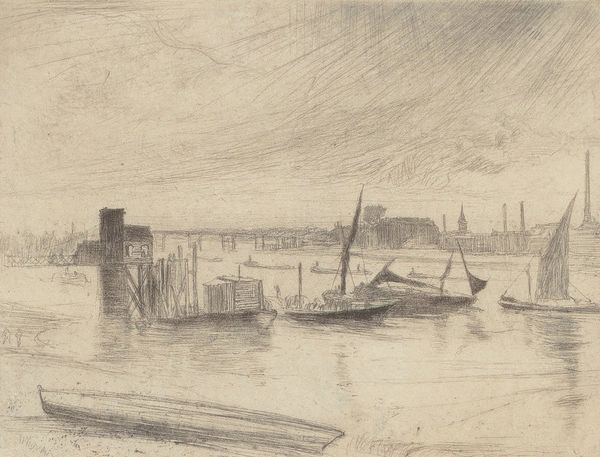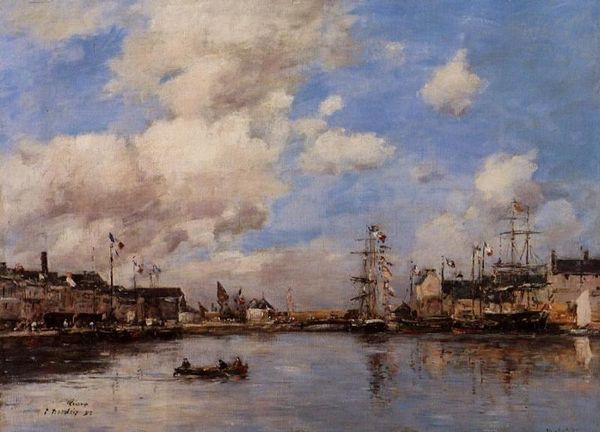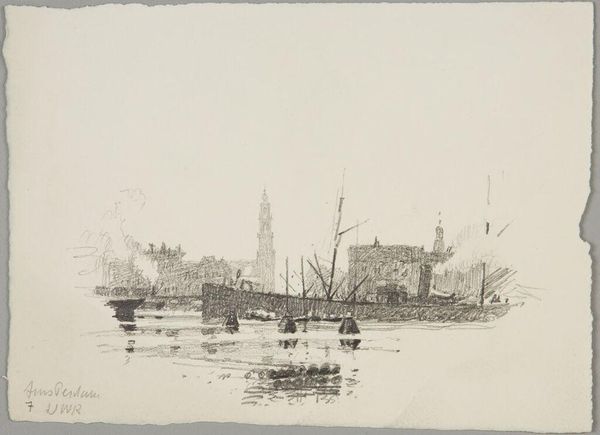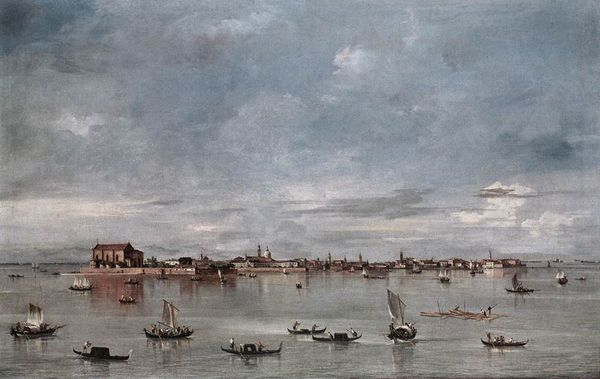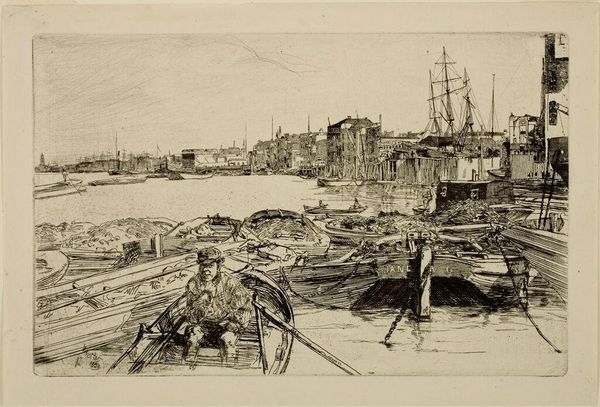
painting, oil-paint, oil-on-canvas
#
black and white photography
#
painting
#
impressionism
#
oil-paint
#
landscape
#
black and white format
#
city scape
#
black and white
#
monochrome photography
#
cityscape
#
monochrome
#
oil-on-canvas
#
monochrome
Dimensions: 38.8 × 55.5 cm (15 1/4 × 21 13/16 in.)
Copyright: Public Domain
Curator: Let's explore "View on the Seine, Paris," an oil on canvas work by Stanislas Lépine, dating from around 1872 and currently residing here at the Art Institute of Chicago. Editor: The immediate impression I get is of stillness and reflection. The muted monochrome palette emphasizes the structural forms of the city and creates a very serene and contemplative atmosphere. Curator: Indeed. Lépine painted this cityscape during a transformative period for Paris, just after the Franco-Prussian War and the Paris Commune. This was a period of intense rebuilding and societal questioning. A key structure in the background of the composition, Notre Dame, was an incredibly contested site for the revolutionaries, yet stands tall here in Lépine’s cityscape. Editor: The choice of a near monochrome scheme does create a sense of uniformity and timelessness, allowing the structural relationships within the painting to speak more clearly. The lines of the bridges, buildings, and boats all interplay to structure a well-defined scene, with very evocative spatial logic, even in its grayscale presentation. Curator: The figures dotted along the docks and in the boats aren't individualized at all, blending into their surroundings and somewhat minimized against the grand scale of the city itself. They're simply components in a society marked by political turbulence and significant population migrations to Paris after its re-establishment. Editor: While context adds rich layers of interpretation, there is still so much to appreciate at a purely formal level. The textures created by the brushstrokes—especially the atmospheric depth achieved in the sky, its delicate contrast to the weight of the water, with precise arrangements that reveal careful choices. Curator: The lack of vibrant color perhaps encourages us to consider the socio-economic realities of the time—the somewhat somber atmosphere reflecting a society grappling with recovery and the negotiation of power dynamics, revealing what was happening on the ground. Editor: Absolutely. And what Lépine is telling us formally creates the foundation for further lines of contextual inquiry. In its own quiet way, Lépine has captured not just a visual depiction of a time and place but also a feeling and structural assessment that transcends its own temporal specificity.
Comments
No comments
Be the first to comment and join the conversation on the ultimate creative platform.
